Piero Dorazio (Rome, 1927 - Perugia, 2005) was one of the greatest representatives of European abstractionism, an artistic current he approached in the mid-20th century. His works are characterized by the use of lines, geometries and colors; all elements that would become his stylistic hallmark, thanks also to a careful study and subdivision of spaces.
From a young age Dorazio set out on a progressive adherence to the Italian abstractionist current. Fundamental to his stylistic path is 1945, the year of the conclusion of World War II. On this date the Italian art scene began to feel the need to remove art from any naturalistic reference and social function that had characterized the works up to that time, in favor of a new, apparently simpler but new language in line with international artistic experiences. Dorazio also expressed himself in this sense, and in 1945, together with Carlo Aymonino, Achille Perilli, Mino Guerrini, Lucio Manisco, Carlo Busiri Vici, Alfio Barbagallo and Renzo Vespignani, he founded the Gruppo Ariete and later the Gruppo Arte Sociale.
In 1947, the expressive research of Dorazian art continued through Gruppo Forma 1, which saw the participation of Carla Accardi, Ugo Attardi, Pietro Consagra, Mino Guerrini, Achille Perilli, Antonio Sanfilippo, and Giulio Turcato; the group’s members were united by the desire to free art from a psychological or realistic dimension, associating it with the criterion of structure and with a focus on sign and form that became a unique element of expression. These principles would henceforth decisively influence all of Dorazio’s production.
After residing in Rome and traveling between Europe and the United States, Dorazio chose an old convent located in Todi, near Perugia, as his permanent home. He moved there in 1973, adapting it as his residence and studio, and it was from the Umbrian countryside that the artist found new inspiration and absorbed a fruitful energy that awakened his senses. That small village in fact became a true temple of ’abstract art that also hosts international artists.
The search for meaning in Dorazian compositions is no easy feat. Yet, in his numerous interviews with critics, Dorazio finds a key to understanding abstract art, stating that the abstract painting represents nothing but itself, since it consists of elements of vision: color, space, matter, size and movement combine to convey sensations and emotions. Art is synthesized in the representation of the unreal, which, however, is able to excite and convey and true feelings. Consequently, non-figurative art is always abstraction since through it it is possible to create images through the elements of vision.
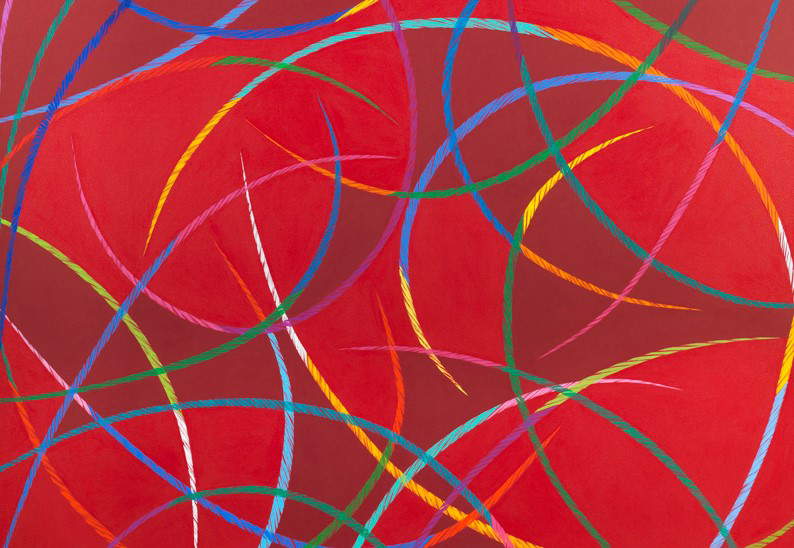
Piero Dorazio was born in Rome on June 29, 1927. In parallel with his classical studies he attended the studio of the painter Aldo Bandinelli, beginning to paint landscape scenes and still lifes and then concentrating on subjects distantly related to Cubism. Painting for the artist represented a form of transgression and escape from the wartime and fascist climate that also disrupted the art sector at that time. After studying architecture at the University of Rome, he enrolled in graduate school and took Lionello Venturi courses, a valuable opportunity to get closer, through slides, to the works of Paul Cézanne, anticipators of Cubism.
In 1947 he won a scholarship to the École des Beaux-Arts in Paris, where he resided for a year, thanks to the mediation of Gino Severini, coming into contact with the protagonists of the local cultural and artistic scene such as André Breton, Henri Matisse, Joan Miró, Le Corbusier, Georges Braque, Hans Arp, and Fernand Léger. In the same year he went to Prague, the city in which the first World Youth Festival was held, in which the Italian section was curated by Mario Pirani and the Socialists, and which represented the first major international gathering of young people from around the world. Back in Rome, the suggestions of the Parisian environment thicken Dorazio’s artistic production, who in fact exhibited three works at the 1948 Quadriennale in Rome and two years later engaged in an ambitious project together with Achille Perilli and Giovanni Guerrini, he opened L’Age d’Or, a gallery-library on Via del Babuino specializing in avant-garde magazines and books and a venue for exhibitions of abstract art, as well as the first gathering place for international bohemians.
Exhibitions in the United States and contacts with artists such as Klein, Cornell, Motherwell, Duchamp, and Rothko constituted for the artist a continuous confrontation with the fermenting international art that especially crowded New York galleries at that time. In fact, in 1954 the Rose Fried Gallery organized his first solo exhibition. Three years later at La Tartaruga Gallery he will open his first Italian solo show.
In 1960 at the University of Pennsylvania in Philadelphia, Dorazio reorganizes and directs the Department of Fine Arts. The following year he receives the Prix Kandinsky and the Paris Biennial prize, but refuses a million-franc fee because he opposes France’s policy of war in Algeria. In 1968 he lived for six months in Berlin, thanks to the prize he received from the German Academy. Back in Italy he moved to the Roman countryside and then resided permanently in the convent in Todi, near Perugia.
Here he continued his work, devoting himself to artist’s books, illustrations, prints, engravings and theatrical settings. In 1979 a major anthological exhibition, organized by the Musée d’Art Moderne de la Ville de Paris, celebrated the painter’s genius and was followed in 1990 by a show at the Musée de Grenoble. Four years later he collaborated on artist mosaics for Rome’s subway stations. The artist’s international reputation is also presented at the Dorazio Jazz exhibition, held at the Museion in Bolzano, although of greater scope will be the retrospective organized at the Institut Valencia d’Art Modern, in Valencia. After having achieved a leading position in the panorama of abstract art, confirmed also thanks to experiences abroad, Piero Dorazio passed away on May 17, 2005, in Perugia.
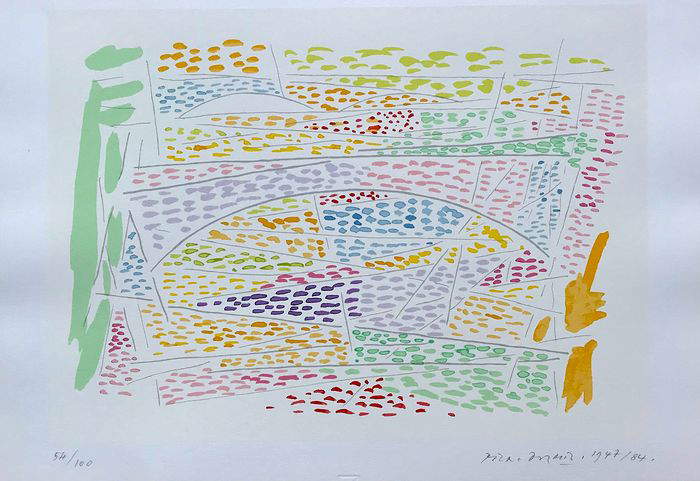
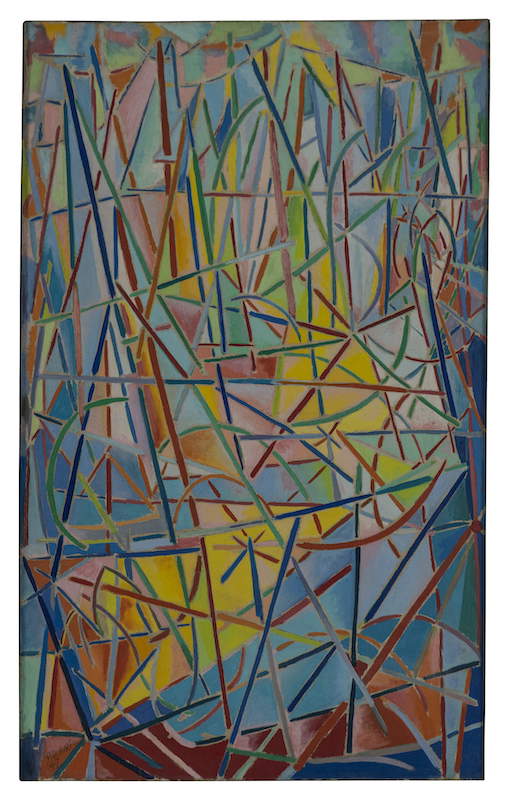
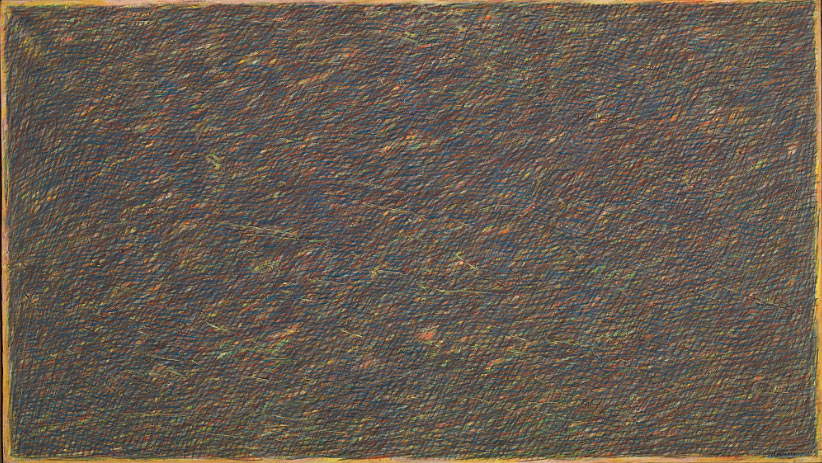
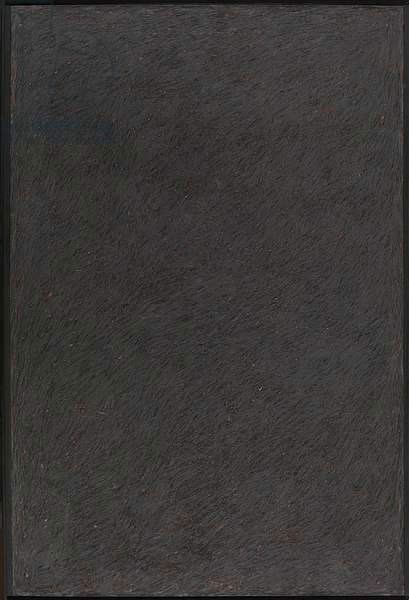
Piero Dorazio’s artistic production is spread over a period of about sixty years, from the very first works of the 1940s that focus on the theme of landscape, through the few examples that show Futurist suggestions, to the main outcome of his research, which, through the use of well-defined colors that mark the pictorial surface, takes shape in the long series of abstract works.
In the early stages of his pictorial investigation, the artist dwells on the theme of landscape, taking as his model the Roman countryside of the Via Flaminia, of which he observes the wild, uncultivated nature and analyzes its lights and shadows, transforming these views into “intuitive landscapes. ”Short-lived is his approach to the Cubist movement, which finds one of its highest achievements in the Still Life of 1946, now in a private collection. Painted immediately after World War II, it is part of the nucleus of youthful works that Dorazio created as a result of some suggestions triggered by a visit to the exhibition with reproductions of Impressionist paintings organized by Lionello Venturi at the National Gallery of Modern Art, and also thanks to the course on Cézanne taught by Venturi at the School of Specialization, which introduced him to pre-Cubist art through black-and-white slides projected at class.
After 1946 the artist met Gino Severini and Enrico Prampolini, founders of the International Art Club at the San Marco Gallery, who introduced him to Futurism, a movement that until then had been overlooked because it was associated with Fascism. In this period his works demonstrate a break with the Roman cultural climate and the Italian climate through the use of dissonant colors and forms that suggest dynamism, as demonstrated by Composizione - Fiorista of 1947, housed at the GAM - Galleria civica d’arte moderna e contemporanea in Turin.
In the same year, the trip to Prague resulted in the creation of the series of Prague Landscapes such as Charles Bridge and All Prague, abstract works that point to the organization of space through the definition of structures and lines such as triangles and ogives that in a way restore the Gothic physiognomy of the city. Paris represents one of the most formative trips for the artist. Here he has the opportunity to paint and study architecture, also frequenting Le Corbusier, Matisse and many others.
Interesting outcome of this sojourn is Leda of 1949, a work inspired by the Greek myth and presented as a constructivist work, where the images are organized by planes and caesuras, in addition to the presence of a movement of curved and straight lines that give the work a synthetic cubist charge.Among the most internationally successful works is the relief Four Questions, a work that constitutes the resetting of painting, where the four questions refer to the concepts of space, color, matter and light posing a question about how to interpret these four parameters of expressive form. It is part of a series of reliefs made from 1952 to 1954, of which he will cast some in silver and bronze. The white reliefs specifically will find great acclaim among American critics.
Telephone Conversation with Ulàn Batòr of 1954 constitutes an obvious return to painting, through brushstrokes of color that recall some masterpieces such as Umberto Boccioni’s States of Mind, seen by the artist at Galleria La Margherita in Rome. Now the composition is full and the surface of the painting is seen as a rhythmically repeated, dynamic and continuous musical composition through the stroke of color.
In the artist’s production, the use of particular titles, such as the one employed for Interior of 1957, is intended to disorient the viewer, to distract him from the habit of seeing something already known represented in the painting. The title in this case refers to a metaphysical interior since the work depicts neither a landscape nor a figure. This painting continues the experience of the previous one as it contains similar ways of painting such as flat brushstroke and palette knife stroke. The colors are not dramatic, but serene as were the years Dorazio experienced at that time.
Toward the end of the 1950s the paintings are characterized by a dense surface of brushstrokes. Paintings such as Stream of Tenderness and Styx, made in 1958 and housed at the Museo del Novecento in Milan, reveal a mixture of three primary colors, used in an almost pointillist manner. The two canvases anticipate the “reticles” of the 1960s, so defined by critics. To this type belongs Oltre blu, a work in which ordered brushstrokes build a structure that creates a feeling of space; they are not straight strokes but attached to each other, recalling Previati’s pointillist painting. Also in the 1960s, Dorazio closely investigates the texture of “reticles”, making true enlargements that feature overlapping oblique, horizontal and vertical lines. Thus is constructed Seeking the Magliana of 1964, from a private collection, which by its construction suggests a sense of movement and light. The theme of dynamism is also echoed in Tangent, a painting that features curved lines that characterize works from 1966 to 1969.
In the 1970s, the artist’s painting became increasingly rhythmic, full of contrasts and points of light and shadow as evidence Discanto of 1975. Here patches of color are drawn in order, intuitively and dynamically. The close search for the structure of the composition represents a constant theme throughout the painter’s late production. Until the 2000s the theme of “reticles” is analyzed in many works that have made him in fact one of the most important abstract artists on the Italian and international scene.
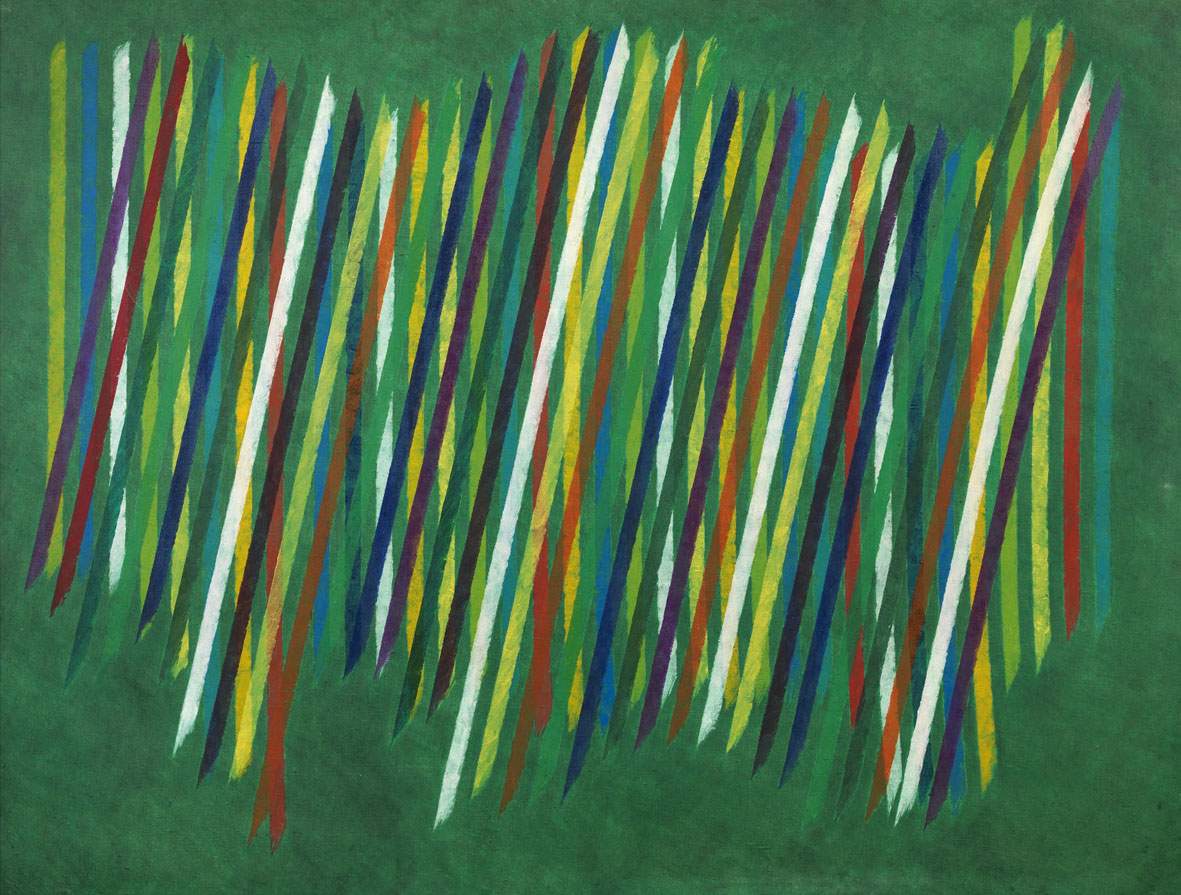
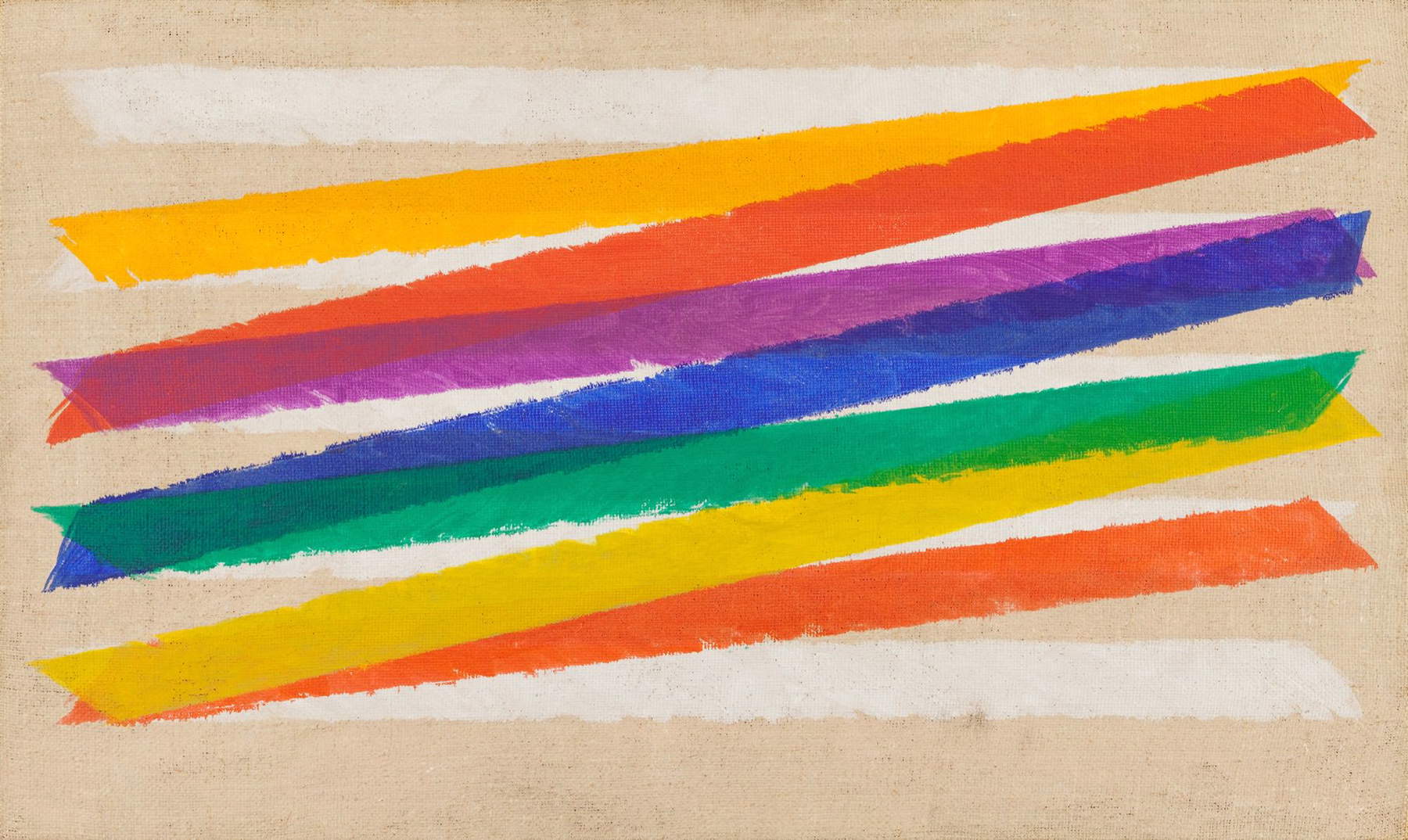
Although many works are held in private collections, to date the Dorazian production visible to the public is divided between Italy, Vienna, Amsterdam, London, and New York.
Starting from the first location, we note the GAM - Galleria civica d’arte moderna e contemporanea in Turin, where both Composizione - Fiorista of 1947 and La ribambelle des Gobelins of 1964 are preserved. In Rome, on the other hand, is kept Ginn Rull, a diptych made in acrylic on canvas owned by GNAM - Galleria Nazionale d’Arte Moderna e Contemporanea di Roma; at MACRO - Museo d’arte contemporanea di Roma there is a work from the mature phase, No-stop dating from 1996. Also in the Intesa Sanpaolo collection is an oil on canvas entitled Crack bleu from 1959.
At the Museum moderner Kunst Stiftung Ludwig Wien in Vienna is Supernova from 1958. At the Tate Modern in London is Very Pointed 1965, at the Stedelijk Museum in Amsterdam Between One Thing and Another 1966. Continuing overseas, at the Albright-Knox Art Gallery in Buffalo is A peaceful solution from 1976-1977.
With the intention of promoting the art of Piero Dorazio and encouraging the study and protection of the artist’s production, in 2014, at the behest of the heirs, theAssociazione Archivio Piero Dorazio was established in Milan.
 |
| Piero Dorazio, revolutionary abstractionist. Life, major works, style |
Warning: the translation into English of the original Italian article was created using automatic tools. We undertake to review all articles, but we do not guarantee the total absence of inaccuracies in the translation due to the program. You can find the original by clicking on the ITA button. If you find any mistake,please contact us.